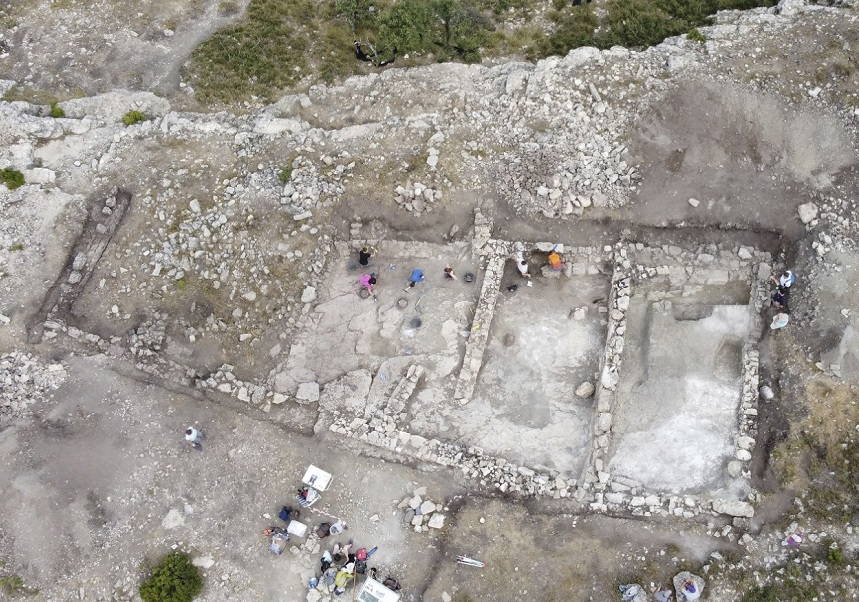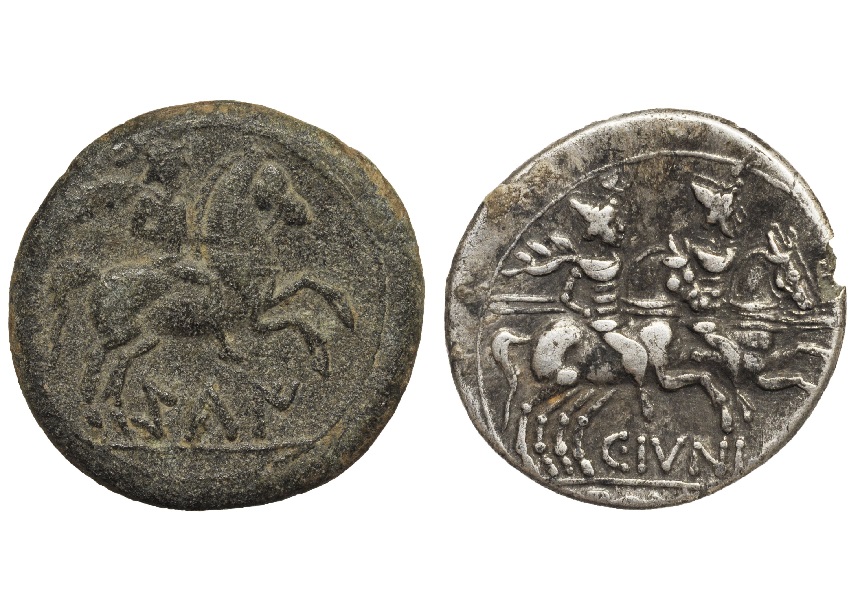
Archaeological excavations at the Iberian site of Pico de los Ajos (Yátova) have so far recovered 15 coins, making this one of the largest numismatic assemblages discovered in archaeological context at Iberian sites in the Valencian region from this period. The find confirms trade between the settlement and other nearby centres, particularly through the River Magro corridor, more than 2,000 years ago. The findings have been published in the journal Revista Numismática Hécate.
“The assemblage, comprising both Iberian coins and coins minted in Rome, is one of the most extensive from these periods (2nd–1st centuries BC) found in archaeological context in the present-day Valencian area. It complements the important collection of lead tablets inscribed with Iberian script also recovered from the site”, explains David Quixal, lecturer in the Department of Prehistory, Archaeology and Ancient History at the University of Valencia and co-director of the excavation in Yátova alongside professor Consuelo Mata. The project also involves the Museum of Prehistory of Valencia and the City Council of Yátova, located in the Foia de Bunyol-Chiva region.
Specifically, the excavation campaigns carried out between 2017 and 2024 at Pico de los Ajos have uncovered 15 coins, mainly from Iberian mints located in what is now the Valencian territory: Arse-Saguntum (Sagunt), Saiti (Xàtiva), Kelin (near Caudete de las Fuentes) and Kili. These account for more than half of the total sample. There are also coins minted in Rome, as well as others from peninsular mints outside the current Valencian area. Additionally, 25 more coins have been documented as the result of chance discoveries or illicit activity, as the site suffered from looting over an extended period.
“The coins show that currency continued to be used at the site until the first third of the 1st century BC, when the Sertorian conflict disrupted life in the settlement. Pico de los Ajos, like other nearby Iberian sites, may have been affected either directly or indirectly by the war, which likely explains the sharp decline in coin and pottery finds in the area”, explain Pablo Cerdà (PhD student at the University of Valencia) and David Quixal in their paper.
In addition to the scientific research, the eight excavation campaigns carried out so far have helped partially recover and highlight this site of cultural interest, integrating it into the well-known Ruta de los Íberos of Valencia, a cultural itinerary featuring the province’s main visitable Iberian sites. At the end of April, a new edition of the open day event Territorio Íbero will be held. The site also serves as a training ground for students of the Bachelor’s Degree in History and of the Master’s Degree in Archaeology of the University of Valencia.
Article reference: Cerdà Insa, P. & Quixal Santos, D. “Hallazgos monetarios en el yacimiento ibérico del Pico de los Ajos (Yátova, Valencia)”. Revista Numismática HÉCATE 11 (2024). ISSN 2386-8643.
Annex photo caption:
- Two of the coins found at the site: (left) coin from the Kili mint (c. 150 BC) and (right) Republican Roman denarius of C. Iunius (149 BC).
Images:














